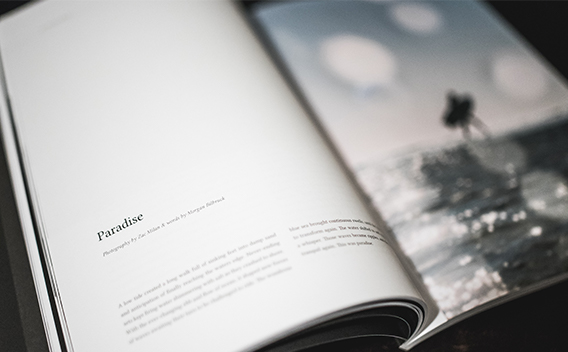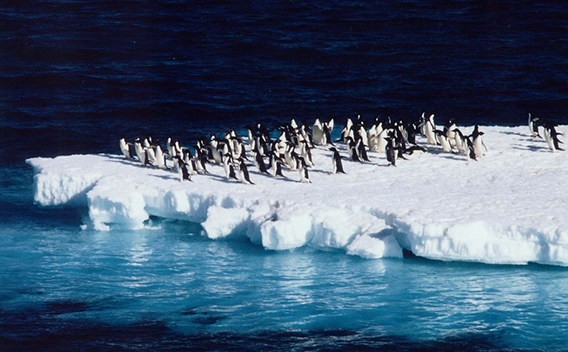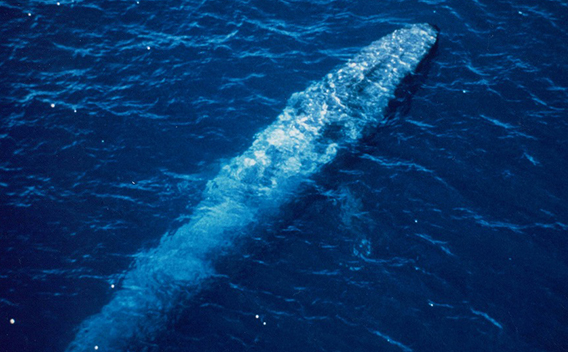論文投稿
CETACEAN POPULATION STUDIES (CPOPS) is an English peer reviewed on-line journal which publishes scientific articles on cetaceans and other marine mammals in the form of (1) Original study - Full paper, (2) Original study - Short note, (3) Review of studies, (4) Photo gallery with explanatory note as well as (5) Others subject to authorization by the Editor-in-Chief in advance of formal submission. CPOPS welcomes contributions from accredited scientists in any country. Copyright for articles published in CPOPS is transferred to CPOPS when the article is accepted for publication. Articles published in CPOPS may not be reproduced, in whole or in part, without written permission from CPOPS. CPOPS does not charge any submission or publication fee.
Full paper and Short note
A Full paper is a self-contained piece of work composed of systematic analyses which are scientifically organized using a significant number of samples or a significant quality of information. For clarification of structure, the paper should be subdivided into meaningful sections such as introduction, materials and methods, results and discussion, etc. The paper should include an appropriate abstract (less than 300 words) and keywords (less than 6 words), and a list of references cited in the text.
A Short note should be composed of important information or analyses which are also scientifically organized, but it is not necessary that the information is based on a sufficient number of samples or observations. The short note contents do not need to be subdivided by sections as in the case of a full paper. It should include an appropriate abstract (less than 100 words) and key words. The short note should not exceed 6 printed pages in length and include some thoughtfully selected tables and figures.
-
Cover page (see submission template attached at end of this document)
The cover page should contain the following information on the article:- Type of manuscript (Original study - Full paper, Original study - Short note, Review of studies, Photo gallery, other)
- Title
- Author(s) with their affiliation(s): All author names, affiliations, addresses, name of author responsible for correspondence and address (phone and/or facsimile number together with an e-mail address). Authors with different affiliations should be identified with superscript (serial) numbers.
- A running title (less than 50 letters), keywords (up to six words) and the number of tables and figures are also required. To distinguish family name(s) from first and/or middle name(s), contributors should spell family names in all capitals.
- Contributors can suggest up to two candidate reviewers who they believe to be suitable for the review of the submitted paper. The editor in chief will use the information for consideration of choosing reviewers. Contributors, if they wish this process, should provide details of the candidates including name, title, affiliation, e-mail address, postal address and a brief description of their expertise.
-
Abstract and key words
Abstracts should be less than 300 words for full papers and reviews, and less than 100 words for short notes, followed by up to six key words in priority order (separated by commas). -
Names of animals
Scientific names of species should be given both in the abstract and in the article at the first reference. Scientific and English names of cetaceans and other marine mammals should be those identified in the Encyclopedia of Marine Mammals (3rd edition), Academic Press, 2017. -
References
Contributors are encouraged to use the following referencing style in manuscripts for CPOPS. We follow the IWC style guide in principle (https://iwc.int/styleguide). Examples are as below:
- Cite all the authors' surnames the first time; e.g. Omura, Nishiwaki and Ohsumi (1980). Where more than two co-authors are involved, only list the first author with the Latin abbreviation "et al".; e.g. Omura et al. (1980).
- If more than one reference is made, then use semi-colons to separate each reference; e.g. Omura, 1960; Nishiwaki, 1965; Ohsumi, 1970.
- Where an author has more than one paper in the same year, suffixes are added to the year; e.g. Ohsumi (1979a) and Ohsumi (1979b).
- Where a personal communication is referred to, abbreviate as "pers. comm.".
In- the text:
- All the authors' names are written. Surnames must be fully spelt out, while given and middle names are expressed just by initials.
- The list is arranged in alphabetical order according to the surname of the first author and further by year (date) of publication if under the same author. Surnames precede initials; e.g. "Ohsumi, S.", "Best, P. B.", "Bannister, J. L.", "Brownell, R. L. Jr.", "van Bree, P. J. H."
- If the reference is to an article in a journal, then the name of authors, the year of publication, the title of the paper, the title of the journal (in italics and abbreviated using the FAO World List of Scientific Periodicals except for certain preferred modifications, or those customary used by the relevant journals themselves (such as Rep. int. Whal. Commn.), the volume number (use numbers in parentheses if the volume is further divided into parts) and the page numbers of the article must be given; e.g. Omura, H. and Kasuya, T. 1976. Additional information on skeleton of the minke whale from the Antarctic. Sci. Rep. Whales Res. Inst. 28(1):57-68.
- If the reference is to a whole book, then the title of the book (in italics, and with initial capitals for major words in the title), the name of the publisher, the city of publication and the total number of pages must be given; e.g. Ridgway, S, H. and Harrison, R. (ed.). 1985. Hand book of Marine Mammals (Volume 3: The Sirenians and Baleen Whales). Academic Press, London, 362pp.
- If the reference is to an article or chapter within a book, then the title and page numbers of the article, the editor's name, the title of the book (in italics), the name of the publisher, the city of publication and the total number of pages of the book must be given; e.g. Kato, H. and Perrin, W. F. 2009. Bryde’s whales Balaenoptera edeni/brydei. p. 158-63. In: Perrin, W.E. et al. (eds.) Encyclopedia of Marine Mammals Second edition. Academic Press & Elsevier, Amsterdam, 1316pp.
- If the reference is to an unpublished paper from a scientific meeting, then the title of the paper, the number/reference of the paper, the title and date of the meeting, and the number of pages should be given along with an e-mail address or other method by which the paper can be obtained; e.g. Kato, H. and Fujise, Y. 2000. Dwarf minke whales; morphology, growth and life history with some analyses on morphometric variation among the different forms. 2000. Paper SC/52/OS presented to the IWC Scientific Committee meeting, June 2000 (unpublished). 24pp. [Available from the secretariat of IWC]
- Murase, H., Matsuoka, K., Nishiwaki, S., Hakamada, T. and Mori, M. 2004. Effect of observed covariates (school size, sighting cue, latitude and sea state) on the Antarctic minke whale abundance estimation parameters in the IWC/IDCR-SOWER surveys. J. Cetacean. Res. Manage. 6(3):283-292.
- Miyazaki, N. 1983. Kinka-zan oki no gonndou ni tsuite (Pilot whale off Kinkazan Island). Abst. Autumn Meeting jap. Soc. Sci. Fish. 55pp (in Japanese).
In the References list:
-
Units and Abbreviations
Following the SBE style manual, all measurements should be given in SI units. Time should be shown as 09:30 and 15:00 and the geographical location as 35°20' 25"N, 136°10' 20"E. Statistical symbols should not be italicized. Significance levels and sample size should be shown with P and N, respectively. -
Tables and Figures
Contributors are requested to take the size of the printed page into consideration when they prepare their tables and figures: the actual print is on 165×223 mm in double columns with 80 mm width. All tables and figures should be cited in the text (as Fig. 1, Figs. 1 and 2, etc.). Figures divided into panels or parts should label each part with a, b, etc. in lower-case type. Lettering in tables should be in lower-case type, with the first letter capitalized. Contributors are encouraged to use color photographs and illustrations.
Submission of Manuscripts
Manuscripts should be original work not previously published. Manuscripts must (in principle) be prepared in Microsoft WORD or PDF files and submitted to the email address below.
E-mail:
cpopspaper@gmail.com
The information obtained through paper submission will not be used for purposes other than those of publication without the consent of the author himself/herself.
Manuscripts are peer-reviewed typically by three anonymous referees nominated by the Editorial Board. Contributors, if they wish, can suggest specific names of up to two experts with sufficient knowledge and experience to review the paper. The Editor-in-Chief will attempt to include one reviewer from the nominated experts.
When contributors are requested to revise their manuscripts, they can resubmit, within 30 days, the revised manuscript incorporating comments and suggestions by referees, together with an attached note describing how the revision has been carried out. The final decision on acceptance or rejection for publication is that of the Editor-in-Chief in consultation with other members of the Editorial Board.
The Instructions to Contributors may be revised from time to time according to development of CPOPS and discussions in the Editorial Board.
Organization of Manuscripts
A. Original study - Full paper
Manuscripts should be formatted in double space on A4 paper size (or closest available size) with one-inch margins and consecutive line numbering. They shall desirably be structured in the following order:
(1) Cover page (See suggested template attached at end of this document)
(2) Title and authors with their affiliations, with indication of corresponding author
(3) Abstract,
(4) Introduction,
(5) Materials and Methods,
(6) Results,
(7) Discussion,
(8) Acknowledgements,
(9) References,
(10) Tables,
(11) Figures with their corresponding captions,
(12) Appendices (if necessary).
Items (6) and (7) can be combined where authors wish to do so.
Currently there is no specified limit on the number of pages for full papers. In some cases the editor in chief may request reduction of pages prior to the start of reviewing the paper.
B. Review and others
Currently, short notes and photo gallery are required not to exceed 6 printed pages of manuscripts organized without subsections of headline. We encourage contributors who wish to submit reviews of studies to contact the journal secretariat on the content and expected pages of their manuscripts before formal submission.
General Instructions
Manuscripts for CPOPS shall be organized in accordance with guidelines provided in corresponding sections of "CBE Style Manual Committee. Council of Biology Editors style manual: a guide for authors, editors, and publishers in the biological sciences. 5th ed. Council of Biology Editors, 1983".



